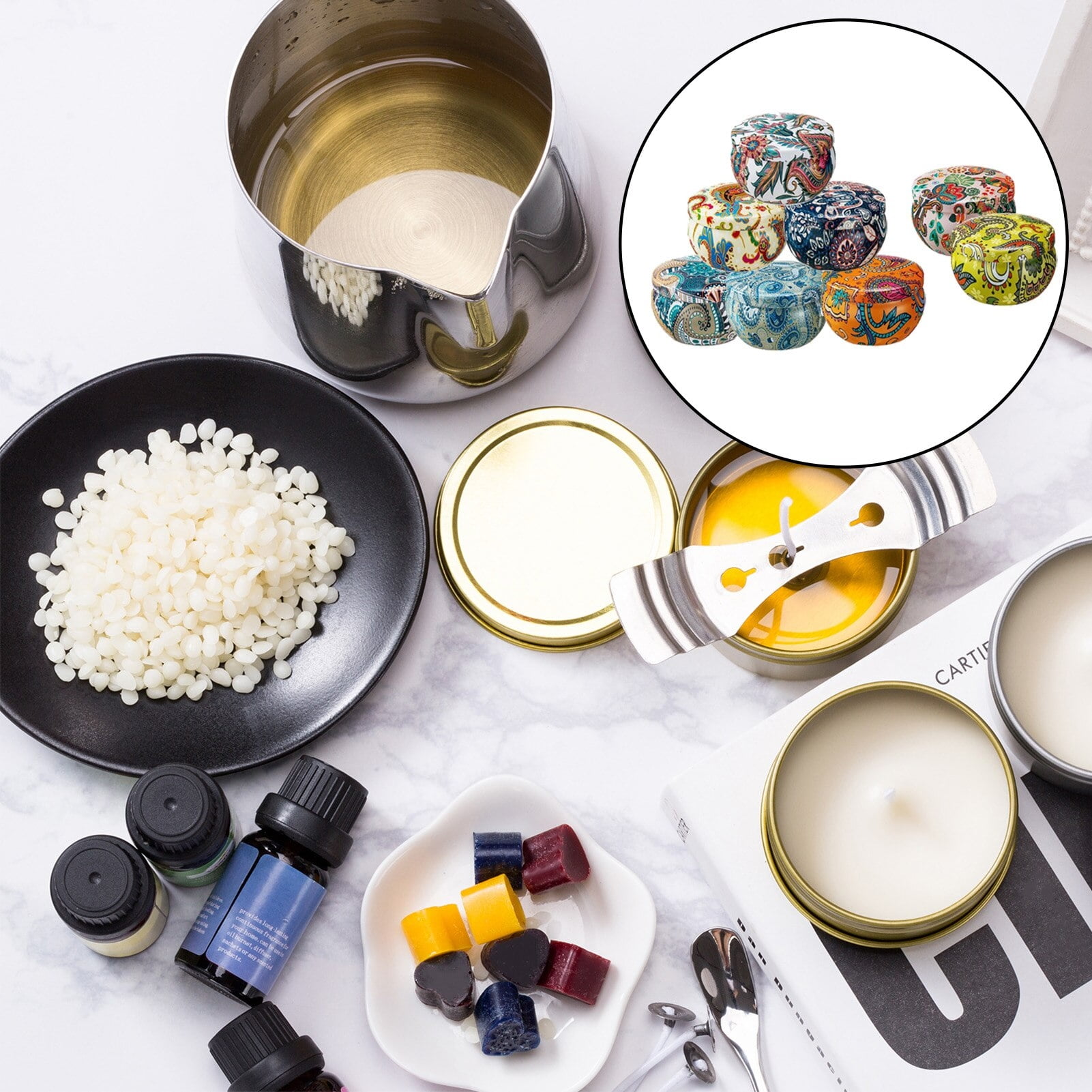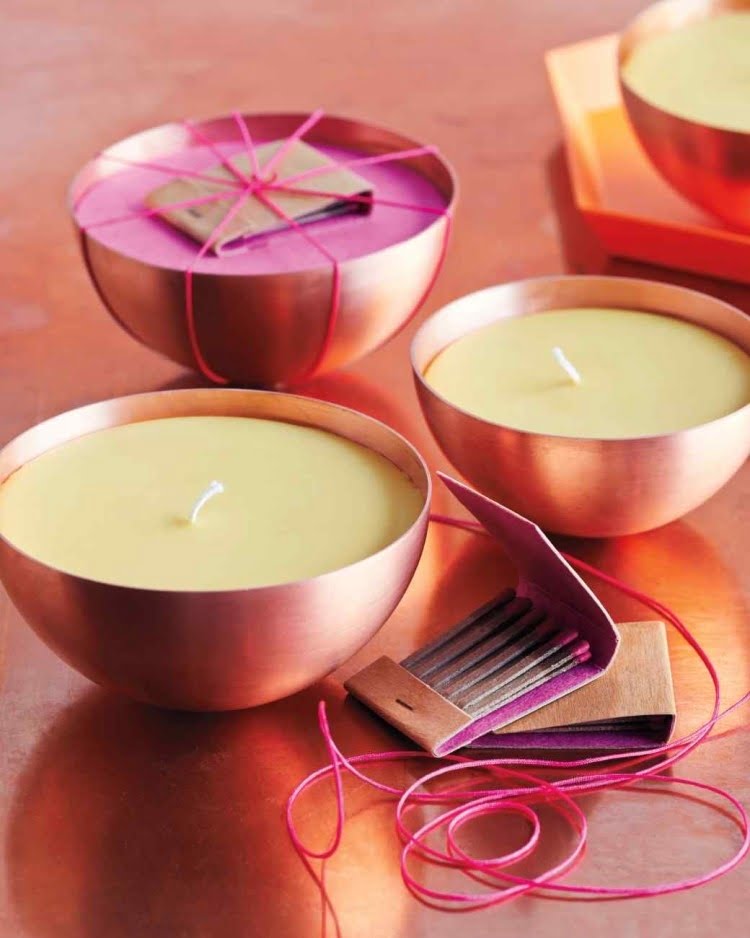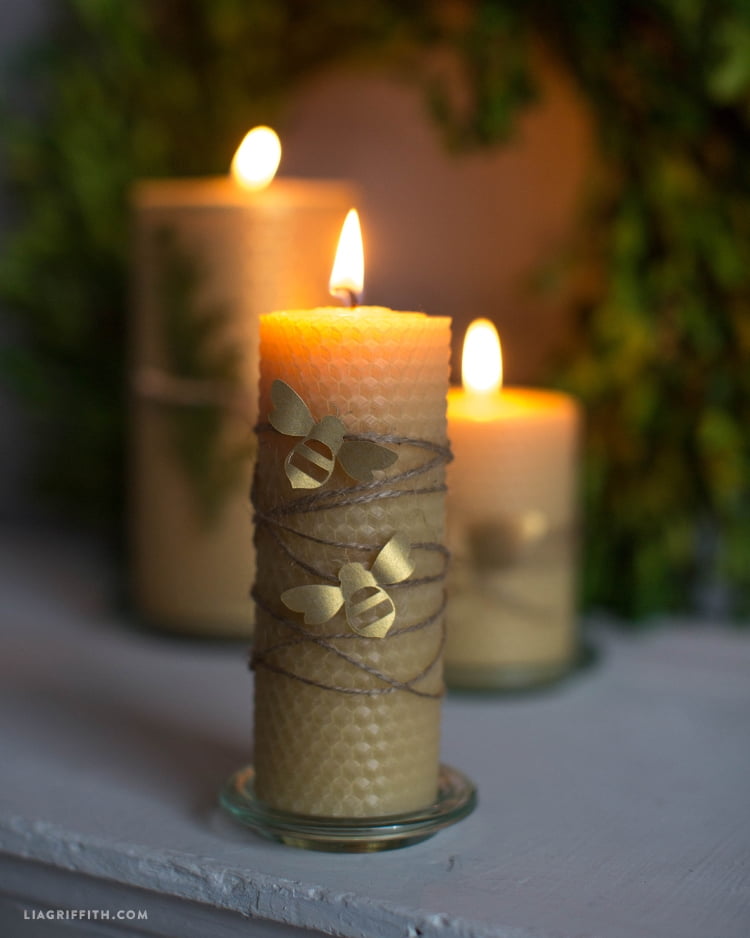When it comes to candle making, there are often unexpected obstacles that can arise, leaving many hobbyists frustrated and unsure of how to troubleshoot these issues. From uneven burning to poor scent throw, making candles can sometimes be a challenging endeavor. However, with the right knowledge and techniques, these problems can easily be resolved. In this article, we will explore the most common problems encountered during candle making and provide practical solutions to fix them.
Whether you are a beginner or an experienced candle maker, understanding the different types of wax is crucial for achieving successful results. Each type of wax has its own unique properties and impacts the overall candle-making process. By gaining a thorough understanding of these variations, you will have the tools necessary to navigate any potential challenges that may arise.
From there, we will delve into specific troubleshooting techniques for prevalent issues such as uneven burning or tunneling, scent throw problems, dyeing issues, cracking or frosting problems, sinking or slumping candles, wick-related challenges, and container adhesion problems.
No matter the problem at hand in your candle-making journey, this comprehensive guide aims to equip you with practical solutions so that you can enjoy a smooth experience with every batch. By troubleshooting these common issues effectively and implementing preventative measures for future projects, you will have all the resources needed to create beautiful candles that burn evenly and emit delightful scents. So let us embark on this journey together as we dive into fixing problems when making candles.
Understanding the Different Types of Wax and Their Impact on Candle Making
When it comes to making candles, one of the most important factors to consider is the type of wax you use. Different types of wax can have a significant impact on the outcome of your candle making process and the overall quality of your finished product. Understanding the different types of wax available and their specific properties is crucial for successful candle making.
There are several common types of wax used in candle making, including paraffin wax, soy wax, beeswax, and palm wax. Each type has its own unique characteristics that can affect factors such as burn time, scent throw, color retention, and overall appearance.
- Paraffin Wax: This is the most commonly used wax in candle making due to its affordability and versatility. It has a high melting point and provides good fragrance retention. However, paraffin wax is derived from petroleum and can produce soot when burned.
- Soy Wax: This natural alternative to paraffin wax is made from soybean oil. Soy wax burns cleaner with less soot and has excellent scent throw. It also has a lower melting point than paraffin wax, which allows for longer burning times.
- Beeswax: Beeswax is known for its natural golden color and sweet honey-like aroma. It has a higher melting point than both paraffin and soy waxes, resulting in longer burn times. Beeswax candles also emit negative ions when burned, which can help purify the air.
- Palm Wax: Made from sustainable palm oil, this eco-friendly option offers excellent scent throw and vibrant colors. Palm wax has a unique crystalline structure that creates an attractive feathering effect when cooled.
When choosing the type of wax for your candles, consider factors such as burn time, scent throw, environmental impact, desired appearance, and personal preferences. Experimenting with different waxes can help you find the perfect fit for your candle making needs.
Troubleshooting Uneven Burning or Tunneling Issues in Candles
Uneven burning and tunneling are common problems that can occur when making candles. Uneven burning happens when the candle burns unevenly, causing wax to accumulate on one side of the container while leaving a hollow tunnel in the middle. This not only affects the appearance of the candle but also reduces its burn time. Fortunately, there are several solutions to address these issues and ensure a more even burn.
- Trim the wick: One common cause of uneven burning is a wick that is too long. A long wick can produce a larger flame, which leads to an excessive amount of heat concentrated on one side of the candle. To solve this problem, trim the wick to about ¼ inch before lighting it. This will help control the size of the flame and promote a more even burn.
- Use a proper size wick: Another factor that contributes to uneven burning is using a wick that is too small for the diameter of your candle container. If you notice tunneling or uneven burning, consider using a larger-sized wick that can provide a wider melt pool. Testing different wick sizes can help you find the right fit for your specific candle.
- Burn your candle for longer periods: To prevent tunneling, it’s important to allow your candle to burn long enough during each use so that the entire top layer of wax melts evenly across the container’s diameter. If you only burn your candle for short periods, it may lead to tunneling since only a small portion of wax liquefies with each burn.
Make sure to follow the recommended burn time instructions provided by your wax manufacturer.
By implementing these solutions, you can troubleshoot and fix uneven burning and tunneling issues in your candles. Remember to experiment with different techniques until you find what works best for your specific container size and type of wax used. With practice and patience, you can achieve beautiful, evenly burning candles that not only look great but also provide hours of aromatic enjoyment.
Dealing with Scent Throw Problems in Candle Making
When it comes to candle making, a crucial aspect is the fragrance or scent throw. This refers to the ability of the candle to release its aroma into the surrounding area when it is lit. However, some common problems can arise that affect the scent throw of candles. Here are a few solutions to address these issues and improve the fragrance experience of your homemade candles.
One common problem is a lack of scent throw, where the candle does not emit a noticeable aroma when burning. There could be several reasons for this issue. Firstly, it is important to use high-quality fragrance oils that are specifically formulated for candle making.
Using cheap or low-quality oils may result in weak or non-existent scent throw. Additionally, using too much or too little fragrance oil can also impact the scent throw. It is essential to follow recommended guidelines and experiment with different amounts until you achieve the desired level of fragrance.
Another issue that can affect scent throw is improper wick selection. The size and type of wick used in your candles play a significant role in distributing the fragrance throughout the room. If you are facing scent throw problems, consider using a larger wick as it will burn hotter and help release more fragrance into the air. Additionally, choosing wicks made from natural materials like cotton can also enhance scent throw compared to synthetic wicks.
Furthermore, factors such as temperature and cure time can affect scent throw as well. Candles need sufficient curing time for the fragrance to fully develop and for optimal scent throw to be achieved.
It is recommended to let your candles cure for at least one week before lighting them. Moreover, placing your candles in warmer areas or near heat sources when they are not being used can help disperse the fragrance molecules throughout the wax, resulting in better scent throw when they are lit.
| Problem | Solution |
|---|---|
| Lack of scent throw | Use high-quality fragrance oils and experiment with appropriate amounts. Ensure proper wick selection. |
| Improper wick selection | Consider using a larger wick and opt for natural material wicks for enhanced scent throw. |
| Inadequate curing time or temperature | Cure candles for at least one week before lighting and place them in warmer areas when not in use. |
How to Correct Dyeing Issues and Achieve Vibrant Colored Candles
Color is an important aspect of candle making, as it can enhance the overall aesthetic appeal of a candle. However, achieving vibrant and consistent colors in candles can be a challenge for beginners. In this section, we will explore some common dyeing issues that candle makers may encounter and discuss effective solutions to overcome them.
Choosing the Right Dyes
One of the key factors in achieving vibrant colored candles is choosing the right type of dye. There are two main types of dyes used in candle making: liquid dyes and dye chips or blocks. Liquid dyes are typically more concentrated and offer a wider range of colors, but they can sometimes cause uneven coloring or bleed. On the other hand, dye chips or blocks are easier to handle and offer more predictable results.
To avoid issues with uneven coloring or bleeding, it is important to carefully follow the instructions provided by the manufacturer when using liquid dyes. Make sure to use the recommended amount of dye for your wax type and adjust accordingly if needed. For dye chips or blocks, ensure that they are fully melted before adding them to your wax.
Achieving Consistent Color
Uneven color distribution can be another challenge when dyeing candles. To achieve consistent color throughout your candles, it is crucial to thoroughly mix the dye into the melted wax. Use a stirring tool specifically dedicated to candle making and stir continuously until you achieve an even color.
If you notice streaks or uneven patches after pouring the wax into the molds or containers, gently tap them on a surface to release any air bubbles that might have formed during pouring. This will help the wax settle evenly and result in a more uniform color distribution.
Overcoming Fading or Bleeding
Fading or bleeding of colors can also occur over time in candles. To prevent fading, consider using UV inhibitors that are specifically designed for candles during the dyeing process. These additives can help extend the color life of your candles.
If you are experiencing bleeding of colors, where one color seeps into another, try reducing the dye concentration or switching to a different type of dye. Experiment with different combinations and techniques to find what works best for your specific candle making process.
By following these tips and troubleshooting techniques, you can overcome common dyeing issues and achieve vibrant colored candles that will delight both yourself and your customers. Remember to always test new dyes and techniques on a small scale before applying them to large batches to ensure the desired result.
Tackling Candle Cracking or Frosting Problems
Candles are not only a source of light, but they also provide relaxation and create a cozy ambiance in any space. However, sometimes candle-making can come with its fair share of challenges. One common problem that candle makers may encounter is cracking or frosting on the surface of their candles. This section will discuss some tips and tricks to tackle these issues and achieve smooth and beautiful candles.
Cracking occurs when the wax shrinks away from the sides of the container, causing cracks to appear on the surface of the candle. Frosting, on the other hand, looks like a white, powdery haze on the surface of the candle. While these issues may seem disappointing, there are ways to prevent or minimize cracking and frosting.
One way to tackle cracking is by ensuring that you properly preheat your containers before pouring the wax. This helps to reduce temperature shock and allows for better adhesion between the wax and the container walls. Additionally, using additives such as stearin can help improve wax adhesion and reduce cracking.
To minimize frosting, it is important to choose waxes that are less prone to this issue. Some waxes naturally produce more frost than others. Testing different types of wax can help you determine which one produces minimal frosting. Another trick is to pour your candles at a lower temperature or use a heat gun or blow dryer on low heat after pouring to smooth out any frosting that may occur.
Tips for Tackling Candle Cracking or Frosting Issues
| Tip | Description |
|---|---|
| Preheat Containers | Ensure containers are preheated before pouring wax to prevent cracking. |
| Add Additives | Using additives like stearin can improve wax adhesion and reduce cracking. |
| Choose Frost-Resistant Wax | Test different types of wax to find ones that are less prone to frosting. |
| Pour at Lower Temperature | Pour candles at a lower temperature to minimize frosting on the surface. |
| Use Heat Gun or Blow Dryer | Smooth out any frosting by using a heat gun or blow dryer on low heat. |
By implementing these tips and tricks, you can tackle candle cracking or frosting problems and achieve stunning candles that burn smoothly and beautifully. Experimenting with different techniques, waxes, and additives can help you find the best solutions for your candle-making process. Remember, troubleshooting is part of the learning curve, so don’t be discouraged by initial challenges – instead, use them as opportunities to improve your candle-making skills.
Preventing and Fixing Candle Sinking or Slumping
Understanding the Causes of Candle Sinking or Slumping
One common problem that candle makers may encounter is candle sinking or slumping. This occurs when a candle collapses inward or becomes concave during the cooling process. Understanding the causes of candle sinking or slumping is crucial to prevent and fix this issue.
There are several factors that can contribute to candle sinking or slumping. One of the main causes is using an incorrect ratio of wax to fragrance oil. Adding too much fragrance oil can cause the wax to become soft and unable to support its own weight, resulting in a sunken or slumped appearance. Additionally, pouring candles at a very high temperature can lead to uneven cooling, causing them to sink or slump.
Tips for Preventing Candle Sinking or Slumping
To prevent candle sinking or slumping, it is important to follow certain precautions during the candle making process. Firstly, ensure that you are using the correct ratio of wax to fragrance oil recommended by your chosen recipe. It is best to stick with reputable sources for reliable ratios.
Furthermore, it is essential to cool your candles properly after pouring them. Avoid placing them in a drafty area as sudden temperature changes can cause uneven cooling and lead to sinking or slumping. Instead, allow your candles to cool slowly at room temperature for optimal results.
Fixing Candle Sinking or Slumping Problems
If you have already encountered candle sinking or slumping issues, there are some steps you can take to salvage your creation. One technique involves melting down the affected candles and adding more wax with a higher melt point into the mixture. This will help raise the overall melting point and provide more stability.
In cases where the sunk area is not too extensive, another method involves reheating the surface of the candle gently with a heat source like a hairdryer until it reaches its original shape. Be cautious not to heat it too much as this may cause further damage. Once the surface is pliable, you can reshape and smooth it with gentle pressure using a spoon or spatula.
By being mindful of the causes and implementing preventative measures, you can minimize the occurrence of candle sinking or slumping. However, in the event that you do experience this problem, there are various techniques available to salvage your candles and achieve a smooth, professional finish.
Overcoming Wick-related Challenges
When it comes to candle making, one of the most common challenges that crafters face is related to the wick. The wick plays a vital role in how the candle burns and performs, and selecting the right wick can make all the difference in creating a successful candle. In this section, we will discuss overcoming wick-related challenges such as selection, centering, and maintenance.
The first step in overcoming wick-related challenges is selecting the right wick for your candle. Choosing the wrong wick can lead to issues such as poor burn performance, excessive smoking, or uneven melting. To select the correct wick size, consider factors such as the diameter of your container or mold and the type of wax you are using.
Different types of wax require different types of wicks to achieve optimal burn performance. Researching and experimenting with different wick sizes can help you find the perfect match for your candles.
Once you have selected the correct wick size, another challenge that candle makers may encounter is centering the wick during pouring. It is crucial for the wick to be centered in order to ensure an even burn throughout the life of the candle.
To achieve proper centering, use tools such as a skewer or chopstick to hold the wick upright and centered while pouring hot wax into your container or mold. Alternatively, you can also use adhesive dots or double-sided tape at the base of your container to secure the wick in place before pouring.
Lastly, proper maintenance is essential for ensuring optimal performance of your candle’s wick. Trim your candle’s wick before each use to prevent excessive smoking and ensure a clean burn. A good rule of thumb is to trim it to about 1/4 inch in length. Additionally, if you notice any mushrooming or soot buildup on your burning wick, extinguish the flame and trim off any excess build-up before relighting.
By overcoming wick-related challenges such as selection, centering, and maintenance, you can enhance the quality and performance of your homemade candles. Taking the time to understand how wicks impact burn performance and implementing proper techniques will result in beautiful, well-performing candles that you can enjoy or share with others.
Troubleshooting Candle Container Adhesion Problems and Preventing Leakage
Candle container adhesion problems and leakage can be frustrating issues when making candles. However, with the right techniques and precautions, these problems can be easily resolved. In this section, we will explore some common causes of candle container adhesion problems and leakage, as well as provide solutions to help you troubleshoot and prevent these issues.
One of the main reasons for poor container adhesion is not properly preparing the containers before pouring the wax. It is essential to clean the containers thoroughly to remove any residues that may prevent the wax from adhering properly. Use warm soapy water or rubbing alcohol to clean the inside of the containers, ensuring they are completely dry before pouring the wax.
Another important step is to preheat your containers by placing them in a warm oven for a few minutes before pouring the hot wax. This will help improve adhesion between the wax and the container.
Another common cause of leakage is an improper wick size or placement. If the wick is too large for your container, it can melt too much wax and create holes through which melted wax can escape.
On the other hand, if the wick is too small, it may not generate enough heat to fully melt all the wax, causing uneven burning and potential leakage. Make sure to choose a wick size that suits your container’s diameter and follow proper guidelines for wick placement.
If you are experiencing leakage despite following proper cleaning and wicking procedures, consider using a sealant or adhesive specifically designed for candle-making containers. Apply a thin layer of sealant around the base of your wick after securing it in place.
This will create an additional barrier to prevent any potential leaks. Additionally, make sure that your candles are stored in a cool, dry place away from direct sunlight or heat sources as high temperatures can cause candles to soften and leak.
By taking these precautions and troubleshooting steps, you can effectively resolve candle container adhesion problems and minimize or prevent leakage. Following these guidelines will help you achieve beautiful and well-made candles that are free from any issues related to container adhesion and leakage.
Conclusion
In conclusion, making candles can be a rewarding and enjoyable hobby, but it is important to be prepared for potential problems that may arise along the way. By understanding the different types of wax and their impact on candle making, you can choose the right wax for your desired outcome and minimize potential issues.
Troubleshooting uneven burning or tunneling issues can be addressed through proper wick selection and maintenance, as well as ensuring the candle has enough time to fully melt each time it is burned.
Scent throw problems can be frustrating, but by using high-quality fragrance oils, adjusting the fragrance load, and properly curing the candles, you can enhance the overall scent experience. Achieving vibrant colored candles requires attention to detail in dye selection and usage. It is crucial to follow instructions carefully and experiment with different amounts to achieve the desired color intensity without compromising burn quality.
Addressing candle cracking or frosting issues can be achieved through proper cooling techniques and keeping an eye on ambient temperature during the cooling process. Similarly, preventing sinking or slumping involves pouring at an appropriate temperature and allowing sufficient curing time before lighting the candles.
Wick-related challenges such as selecting the right wick size for your chosen wax and container, centering the wick properly during pouring, and regular maintenance (such as trimming) are key to achieving optimal burn performance. Lastly, addressing candle container adhesion problems involves selecting a suitable adhesive for securing the wick tab to the bottom of containers, as well as ensuring proper cooling temperatures to prevent leakage.
By following these tips and troubleshooting techniques throughout your candle-making journey, you can have a smoother experience and create beautiful candles without major setbacks. Remember to always keep safety in mind when working with hot wax and open flames. Happy candle making.

Welcome to my candle making blog! In this blog, I will be sharing my tips and tricks for making candles. I will also be sharing some of my favorite recipes.





